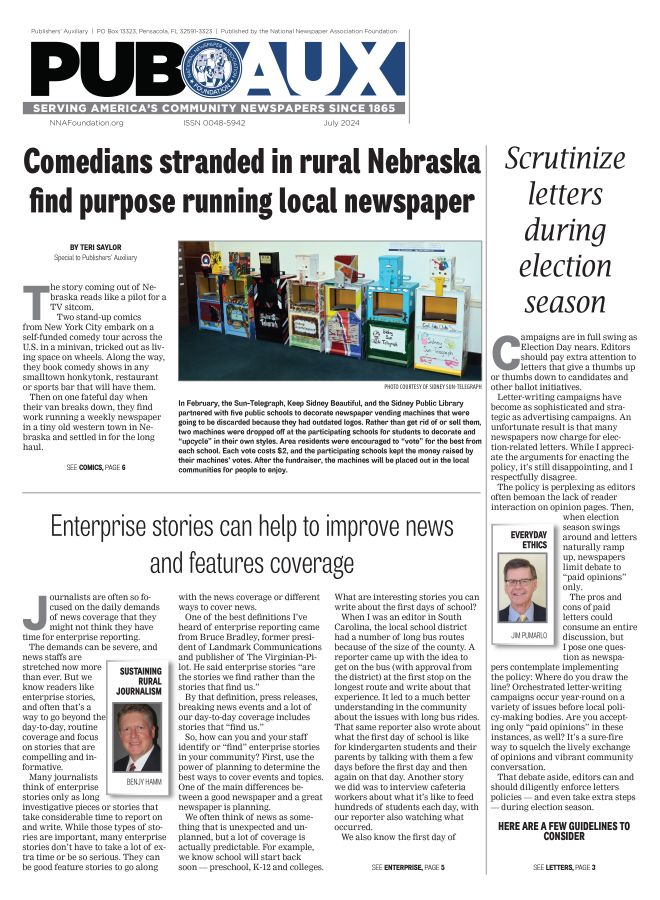Newspapers' rough patch same as anyone else's
By Steve Andrist
I’ve been a public radio fan for a long time.
Perhaps it’s because top 40 seems unimaginative, country western is annoying and talk radio hurts my ears and churns my stomach.
Whatever the reason, I’m the real deal with public radio. I even make a pledge—and a donation—every year so it can continue bringing us the programs we can’t live without.
This week, though, I’m wondering what they’ve got against me, why they don’t return a little of the love.
Wednesday morning last week, and again Thursday, they wailed on me with a sucker punch.
I was minding my own business, crawling out of the shower, and, as usual, listening to Morning Edition on Prairie Public Radio.
Usually I flip the off switch when they come on with that sappy pledge week filler that makes people donate in hopes that the tripe will end before the gag reflex wears out.
This day I hadn’t yet flipped the switch when National Public Radio’s Steve Inskeep gave his pitch on behalf of Prairie Public.
I left him on because he started talking about growing up with newspapers, starting as a boy to read the comics, then, as he aged, graduating to the more serious sections of the paper.
That’s when the other shoe dropped.
Now, he said, when so many newspapers “are just a shell” of what they once were, “Public radio fills the void.”
Not just with international and national news, Steve proclaimed, but also local news “in so many creative ways.”
Here’s the deal.
Public radio easily tops its commercial counterparts in the news and information arena.
But they’re guilty of pack reporting if they buy into the news du jour that claims newspapers have gone the way of the T-rex.
I’m willing to bet a carload of newsprint and a barrel of ink that there are few, if any, public radio stations that do better at local news than the local newspaper.
In North Dakota, where Steve Inskeep’s pitch for bankrollers was made, it can be stated unequivocally that public radio falls far short of newspapers when it comes to state and local news.
Interestingly, when they do get creative about reviewing and analyzing the important news of the day, it’s on their Editors’ Round Table show where the discussion and analysis is done by—you guessed it—newspaper publishers and editors.
None of this is to cast aspersions on public radio, even though you might expect them to be more of a leader of the journalism pack.
In this case, they come across as a follower and participant in a mob mentality that is fueled more by pop culture than by fact.
The truth is, newspapers are not dead.
Like lots of other businesses, many newspapers have suffered through a rough patch during the economic downturn of the past few years.
Some newspapers—especially those that entered the rough patch with tough debt—failed to make it.
Most tightened their belts, just like the rest of the country, and, just like the rest of the country, they’re starting to come out of it.
Certainly that’s not as sexy a story as the one that proclaims newfangled electronic technology is trumping the old school of ink on paper.
But it is more factual.
Newspapers aren’t dead.
Need proof?
Just stop in any newspaper office after the Postal Service has made a change in delivery protocols that causes a delay in delivery to a couple hundred subscribers.
Or listen in on the phone calls after that newfangled technology develops a glitch that prevents a couple dozen online subscribers from getting the password for the week’s e-edition.
Dozens of those readers will be out for blood; proof positive that newspapers are alive and well.
Steve Andrist is publisher of Journal Publishing Inc. in Crosby and Tioga, ND. He can be reached at stevea@crosbynd.com.







